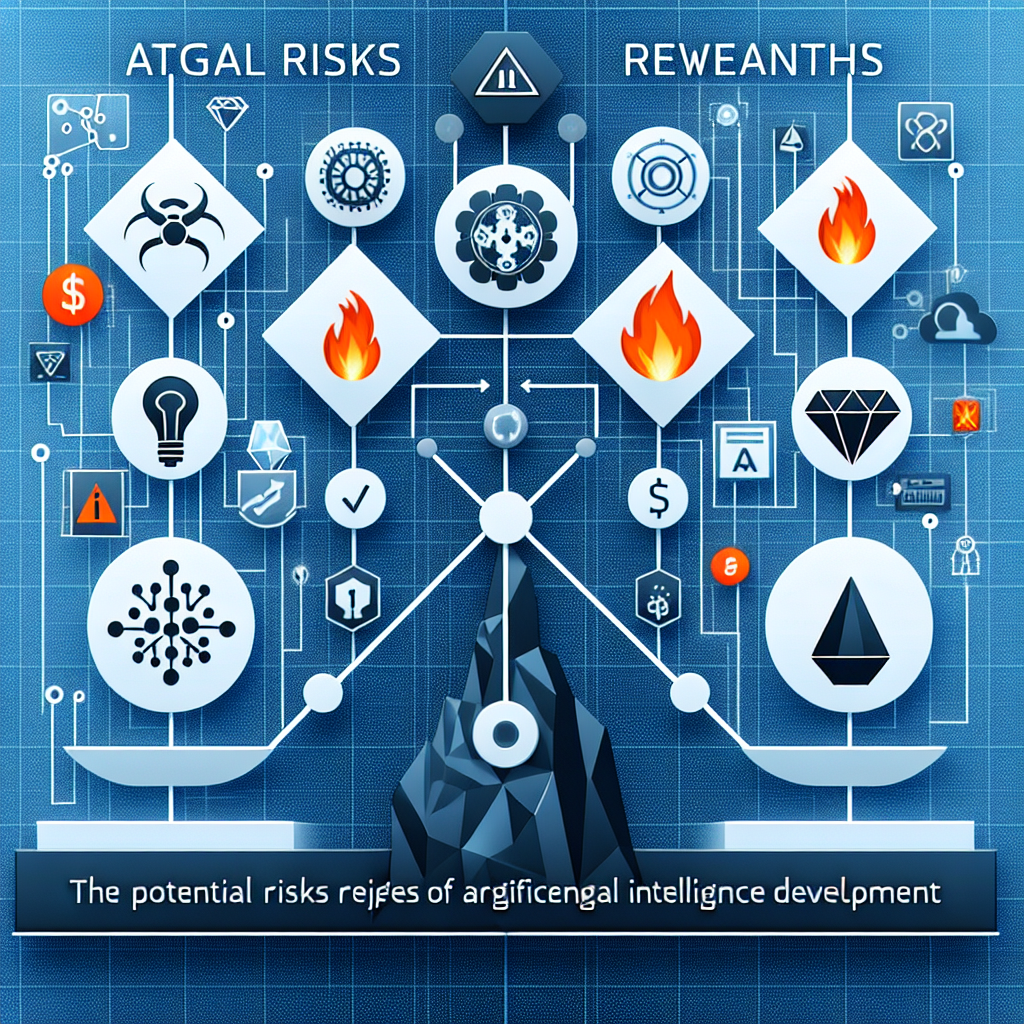Artificial General Intelligence (AGI) has long been a goal of the field of artificial intelligence. AGI refers to a machine intelligence that can successfully perform any intellectual task that a human being can. While the development of AGI holds immense potential for advancing technology and improving our lives, it also comes with significant risks. In this article, we will explore the potential rewards and risks of AGI development.
Potential Rewards of AGI Development
1. Improved Efficiency: One of the biggest potential benefits of AGI development is the ability to automate tasks that are currently performed by humans. This could lead to significant improvements in efficiency and productivity across a wide range of industries. For example, AGI could revolutionize healthcare by streamlining administrative tasks, diagnosing diseases more accurately, and even performing surgeries with greater precision.
2. Scientific Discoveries: AGI has the potential to revolutionize scientific research by quickly analyzing vast amounts of data and identifying patterns that are not immediately obvious to human researchers. This could lead to breakthroughs in fields such as medicine, climate science, and physics.
3. Enhanced Personalization: AGI could also lead to more personalized experiences for individuals in various aspects of their lives, from shopping recommendations to healthcare treatments. By understanding individual preferences and needs better than any human could, AGI could tailor products and services to each person’s unique requirements.
4. Improved Safety and Security: AGI could be used to enhance safety and security in various ways, such as monitoring for potential threats in real-time, predicting natural disasters, and identifying cybersecurity vulnerabilities. This could help prevent accidents, crimes, and other dangerous situations.
5. Economic Growth: The development of AGI could lead to new industries and job opportunities, as well as increased productivity and innovation. This could drive economic growth and create wealth for individuals and nations.
Potential Risks of AGI Development
1. Job Displacement: One of the biggest concerns surrounding AGI development is the potential for widespread job displacement. As machines become increasingly capable of performing a wide range of tasks, many human jobs could become obsolete. This could lead to high levels of unemployment and economic instability.
2. Unintended Consequences: AGI systems are designed to optimize specific objectives, but they may not always consider the broader consequences of their actions. This could lead to unintended outcomes that are harmful to humans or the environment. For example, an AGI system tasked with maximizing profits for a company might exploit workers or cut corners on safety measures.
3. Security Risks: AGI systems could be vulnerable to hacking, manipulation, or misuse by malicious actors. This could result in data breaches, privacy violations, or even physical harm to individuals. Ensuring the security and safety of AGI systems will be crucial to prevent such risks.
4. Ethical Concerns: AGI development raises important ethical questions, such as how to ensure fairness and transparency in decision-making, how to protect human rights and dignity, and how to prevent discrimination and bias in AI systems. These concerns must be addressed to ensure that AGI benefits society as a whole.
5. Existential Risks: Some experts warn that the development of AGI could pose existential risks to humanity, such as the possibility of AGI surpassing human intelligence and becoming uncontrollable or hostile. This scenario, known as the “singularity,” has sparked debate about how to safely and responsibly pursue AGI development.
Frequently Asked Questions
Q: What is the current state of AGI development?
A: While significant progress has been made in the field of artificial intelligence, true AGI has not yet been achieved. Most AI systems today are considered narrow AI, meaning they are designed for specific tasks and lack general intelligence. Researchers continue to work towards developing AGI, but it remains a long-term goal.
Q: How far away are we from achieving AGI?
A: It is difficult to predict exactly when AGI will be achieved, as it depends on many factors such as technological advancements, research funding, and societal acceptance. Some experts believe we could see AGI within the next few decades, while others think it may be much further in the future.
Q: What steps are being taken to address the risks of AGI development?
A: Researchers and policymakers are actively working to address the risks of AGI development through initiatives such as the Partnership on AI, which aims to promote best practices in AI research and development. Ethical guidelines, transparency standards, and regulatory frameworks are also being developed to ensure the safe and responsible use of AGI.
Q: How can individuals prepare for the impact of AGI on the workforce?
A: To prepare for the potential job displacement caused by AGI, individuals can focus on developing skills that are complementary to AI, such as creativity, critical thinking, and emotional intelligence. Lifelong learning, career flexibility, and adaptation to new technologies will be key to staying competitive in the age of AGI.
In conclusion, the development of AGI holds great promise for advancing technology and improving our lives in many ways. However, it also comes with significant risks that must be carefully considered and addressed. By taking a proactive and responsible approach to AGI development, we can maximize its benefits while minimizing its potential harms.

